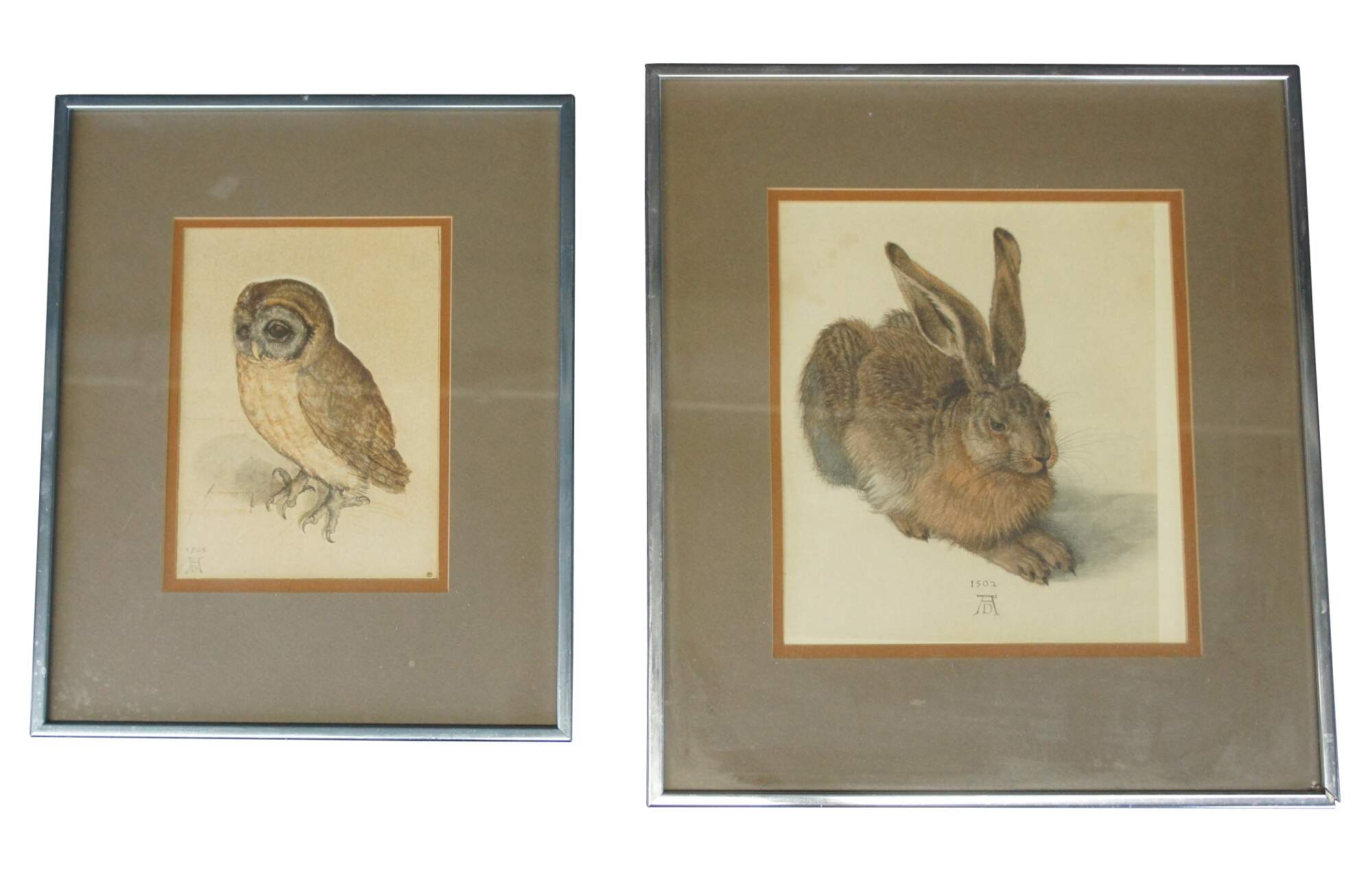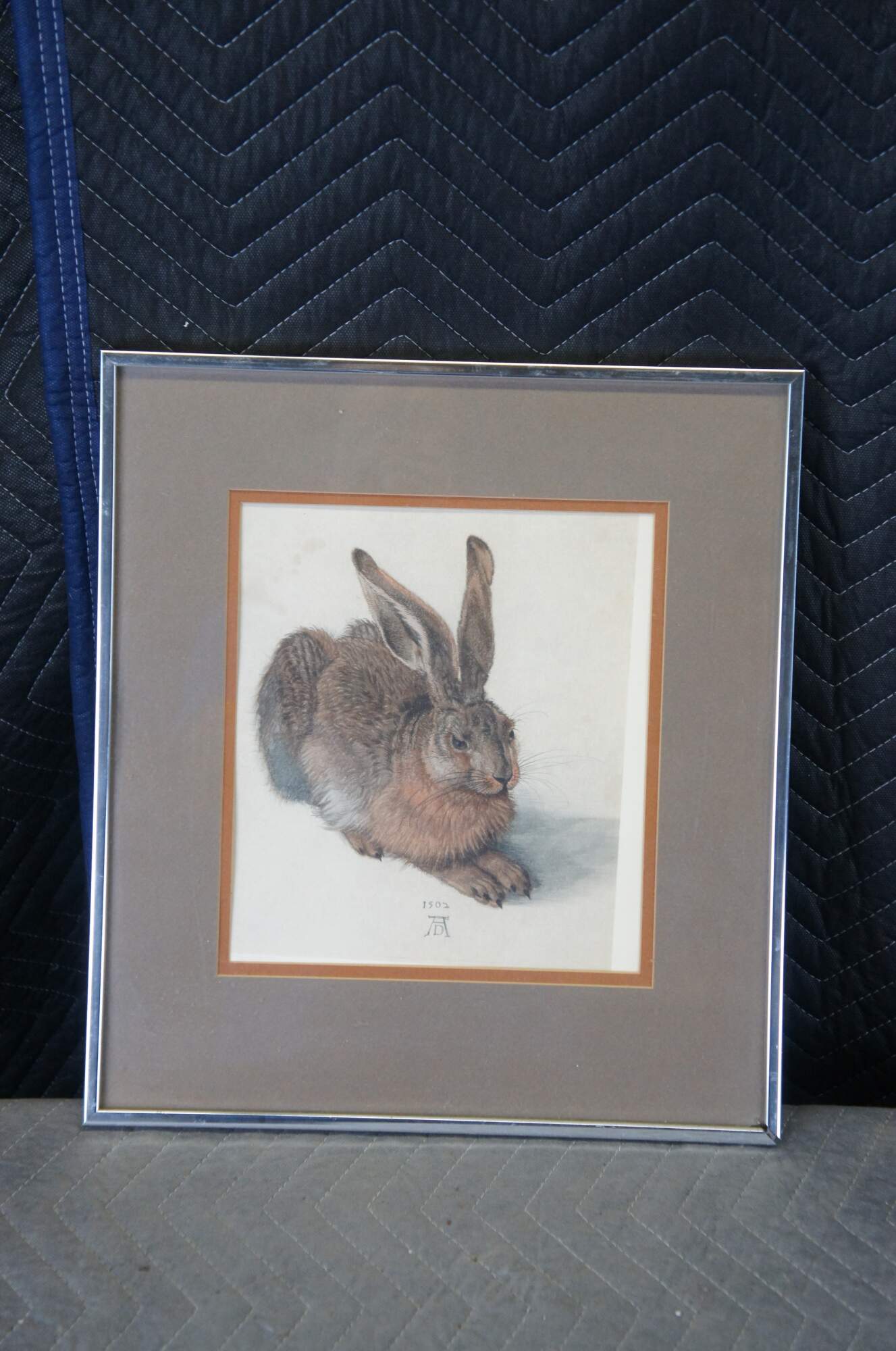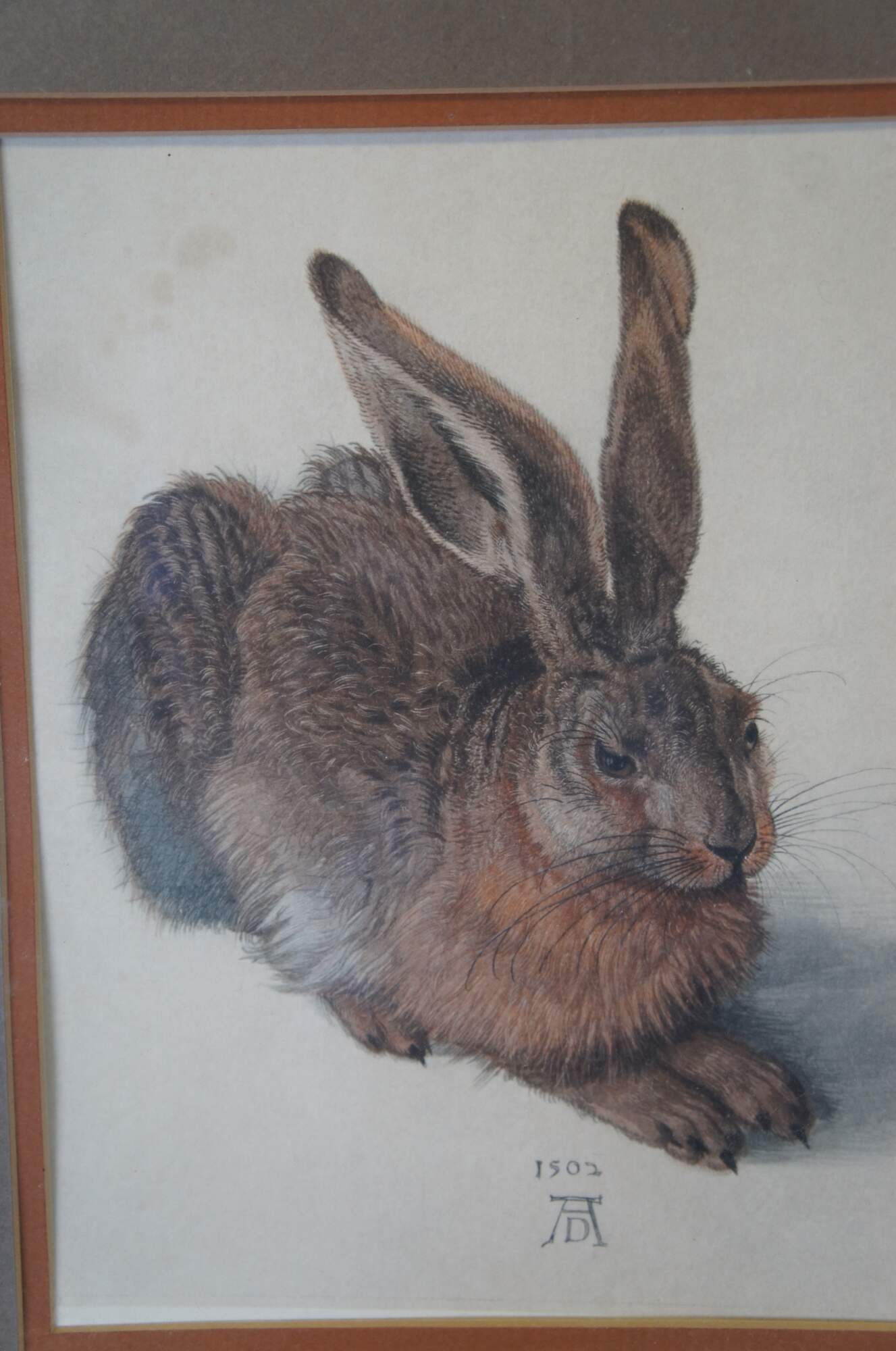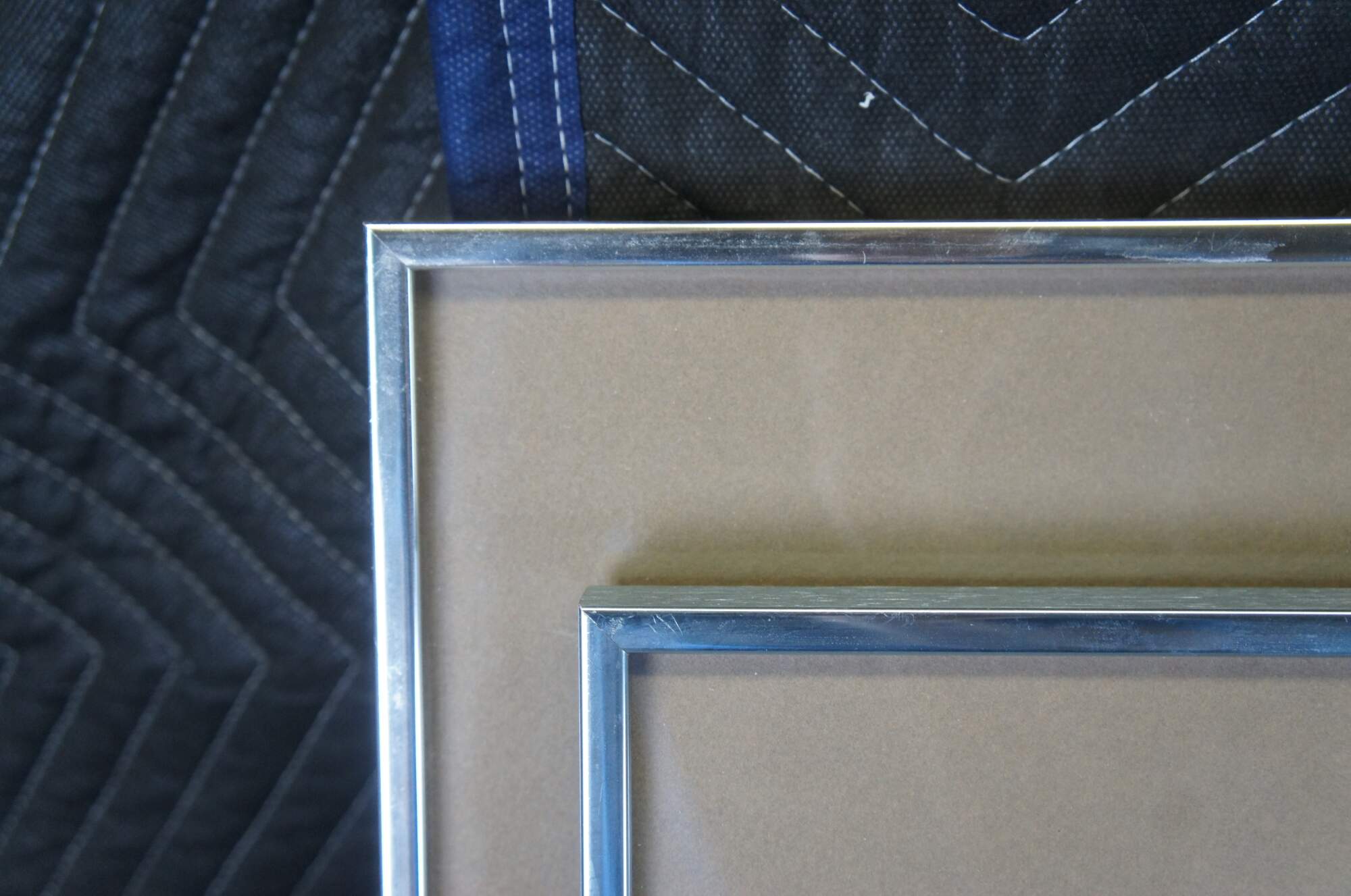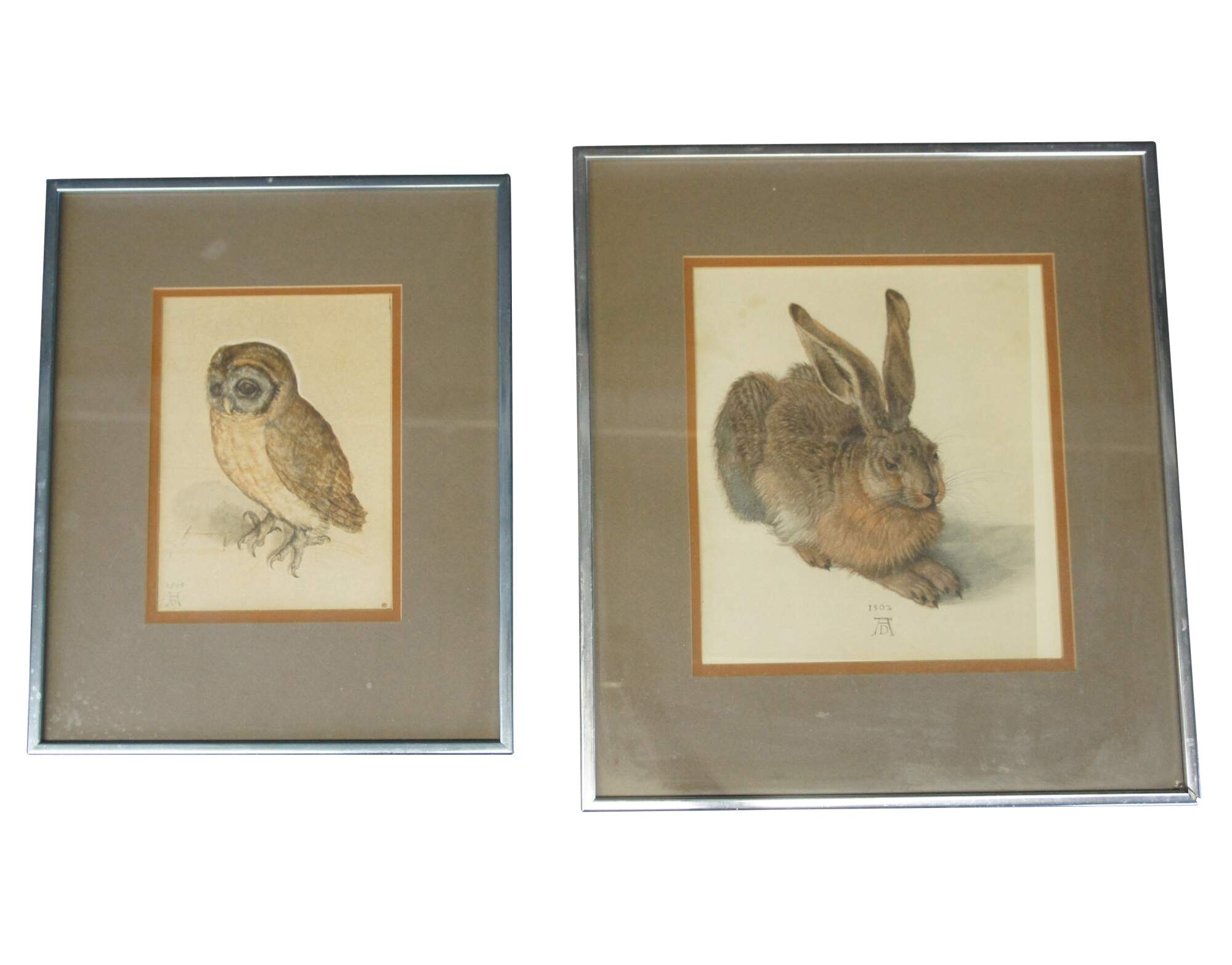
Vintage Albrecht Dürer Museum Reproductions Young Hare & Screech Owl Prints
Sold
Shipping:
Free Shipping Included
Delivery:
Estimated 2-15 Business Days
Payments:
Credit Card, Check, Cash, PayPal, Apple Pay, Venmo
Returns:
30 Days 100% Money Back Guarantee, Buyer Pays Return Shipping
Description
Vintage Albrecht Dürer Museum Reproductions after the 16th century weatercolor paintings. Originally painted in 1502 & 1508. ""Young Hare"" & ""Screech Owl"" , circa 1980s. Each is professionally framed. Purchased from the Albertina Museum in Vienna.
Albrecht Dürer (/ˈdjʊərər/;[1] German: [ˈʔalbʁɛçt ˈdyːʁɐ];[2][3][1] Hungarian: Ajtósi Adalbert; 21 May 1471 – 6 April 1528),[4] sometimes spelled in English as Durer (without an umlaut) or Duerer, was a German painter, printmaker, and theorist of the German Renaissance. Born in Nuremberg, Dürer established his reputation and influence across Europe in his twenties due to his high-quality woodcut prints. He was in contact with the major Italian artists of his time, including Raphael, Giovanni Bellini, and Leonardo da Vinci, and from 1512 was patronized by Emperor Maximilian I.
Dürer's self-portrait at 28 (1500). Alte Pinakothek, Munich.
Dürer's vast body of work includes engravings, his preferred technique in his later prints, altarpieces, portraits and self-portraits, watercolours and books. The woodcuts series are more Gothic than the rest of his work. His well-known engravings include the three Meisterstiche (master prints) Knight, Death and the Devil (1513), Saint Jerome in his Study (1514), and Melencolia I (1514). His watercolors mark him as one of the first European landscape artists, while his woodcuts revolutionised the potential of that medium.
Dürer's introduction of classical motifs into Northern art, through his knowledge of Italian artists and German humanists, has secured his reputation as one of the most important figures of the Northern Renaissance. This is reinforced by his theoretical treatises, which involve principles of mathematics, perspective, and ideal proportions.
Condition
Good Vintage Condition; light wear to the frames from use and age
Dimensions
bunny 14" x 16", sans 8" x 10"; owl 11" x 14", sans 6 x 8
